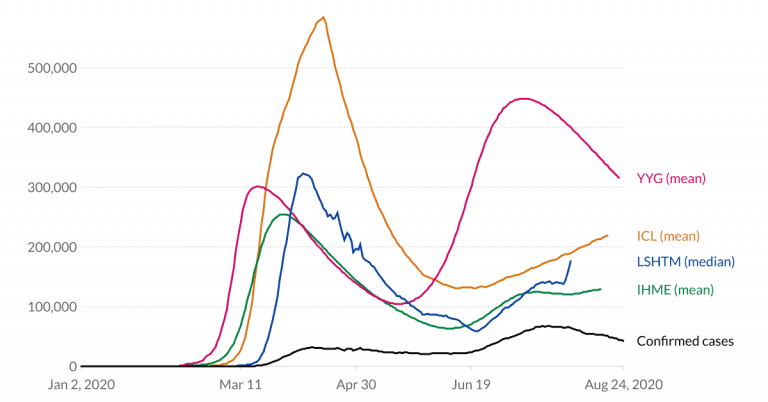Data science has developed and produced a variety of new applications that provide better insight and value to small businesses. Data science applications, methodologies, tools, and technologies, including various tools that facilitate data analysis, machine learning, and data visualization, can allow organizations to extract valuable information from increasing amounts of highly variable data and perform various data science tasks efficiently. Data science is an applied science that helps businesses get more out of the information they own.
Artificial intelligence and big data tools allow users to analyze large amounts of data and make decisions using applications such as predictive modeling, pattern detection, anomaly detection, and personalization. Data science and the data scientists who perform it are now a key part of business operations.
Although many types of organizations implement analytics applications driven by data science, many focus on areas that have proven valuable over the past decade.
Businesses can get competitive advantages over their competitors, better service to citizens, patients, and users, and the ability to adapt to changing business environments that require continuous adaptation.
Let’s inspect seven data science applications that are common:
1. Anomaly Detection
A powerful tool for data science is statistical analysis, which can spot anomalies within large data sets. Anomaly detection often requires extensive data processing to efficiently handle and analyze large datasets. Grouping data and identifying outliers with small data sets might seem easy. Still, this task is much more challenging for organizations that analyze petabytes to exabytes of data.
Financial services companies are increasingly challenged to spot fraudulent spending in transaction data, which grows in volume and variety.
American Express pioneered applying data science techniques to big data in real-time for fraud detection and other purposes.
This enabled them to respond quickly to changes and events. Also, anomaly detection can eliminate outlier values from data sets to improve analytics accuracy.
2. Recognition of Patterns
Identifying patterns within data sets is a fundamental project in data science, often involving extensive data manipulation. Pattern recognition is a tool retailers and e-commerce businesses use to spot patterns in customer buying behavior.
Organizations that want their customers to be happy and return for more will need reliable supply chains.

Amazon and Walmart use data science to identify purchasing patterns. Both companies seek unexpected correlations that lead to more efficient purchasing, inventory management, and marketing strategies.
We can use pattern recognition for many other data science applications. It can aid in stock trading, risk management, and diagnosing and treating medical conditions.
3. Predictive Modeling
Data science is about spotting patterns and outliers. It aims to improve predictive modeling accuracy.
Data science extends to predictive analytics, a form of business analytics that applies machine learning and other algorithmic approaches using specialized data science tools. These tools help analyze large data sets to improve decision-making capabilities.
This includes creating models to predict better customer behavior, market trends, and financial risks.

Various industries use data analytics and predictive analytics applications, such as financial services, government, manufacturing, healthcare, and travel. Manufacturers employ predictive maintenance systems to reduce equipment downtime and increase production.
Airbus and Boeing also use predictive maintenance to increase their fleet availability. Chevron, BP, and other companies in this sector use predictive modeling to increase equipment reliability in environments where maintenance can be expensive.
Organizations also use data science’s predictive power to improve their business forecasting. When sudden changes in consumer spending and purchasing patterns occur, retailers' and manufacturers' formulaic buying strategies fail.
These brittle systems are now replaced by data-driven forecasting apps that can better respond to changing customer behavior in forward-thinking companies.
4. Personalization and Recommendation Engines
Customer and user satisfaction is usually highest when customized products or services meet customers' needs and interests. Exploratory data analysis is often used to understand user preferences and improve recommendation engines. A great learning is that this is especially true if the customer can receive the right product at just the right time through the right channel with the right offer, communicated with the right message, and the right level of attention. Customers are far more likely to return if they are satisfied and engaged.
In the past, customizing products and services to individual needs was difficult and expensive. Thus, systems that recommended products or personalized offers grouped people into buckets generalized to their characteristics.
This approach was far better than no customization but was not optimal.

Organizations can now create detailed customer profiles thanks to machine learning, statistical learning, data science, and big data. Over time, their systems can learn people’s preferences and match them with others who have similar preferences—an approach known as hyper-personalization.
Companies such as Home Depot, Lowe’s, and Netflix use hyper-personalization techniques driven by data science to better focus their offerings on customers through recommendation engines and personalized marketing.
Many financial service firms also offer hyper-personalized services to customers. Healthcare organizations use the approach to deliver treatments and care to patients, and educational institutions provide highly customized, adaptive learning for students.
5. Categorization and Classification
Data science tools can sort large amounts of data and classify or categorize it based on learned characteristics. Statistical computing plays a crucial role in categorizing and classifying large datasets. This is useful for unstructured data, while structured data can be searched and accessed through a schema.
Unstructured data, however, is more difficult to process and analyze. Unstructured data includes emails, documents, images, videos, text, and binary information. Mining that data to gain valuable insights was an arduous task until recently.
Deep learning has made it easier for organizations to perform unstructured data analysis. This includes image, object, and audio recognition tasks, as well as data classification based on document type. Data science teams can train deep-learning systems to identify invoices and contracts among stacks of documents.
Government agencies are also using data science to classify and categorize data. NASA uses image recognition to provide deeper insight into objects in space, and the U.S. Bureau of Labor Statistics automates the classification of workplace injuries based on an analysis of incident reports.
6. Analysis of Behavior and Sentiment
Data scientists use machine learning and deep learning to analyze data and discover what customers and users think and how they behave. Data cleaning is essential to ensure the accuracy and reliability of data used in behavior and sentiment analysis.
Data science allows organizations to identify buying patterns and use data to analyze behavioral and sentiment characteristics.

This helps them understand how customers feel about their products and services and what they think of the experience. These applications can categorize and track customer behavior.
Travel and hospitality businesses have adopted this high-powered method of sentiment analysis to identify customers who have had negative or positive experiences.
Law enforcement agencies also use sentiment and behavior analysis to identify incidents, situations, and trends as they arise and develop, for example, by analyzing social media posts.
7. Conversational Systems
Machine learning was first applied to chatbots that could communicate with humans in an almost lifelike way.
Computing pioneer Alan Turing created the Turing Test in 1950. It uses a conversational format to indicate whether a system can imitate human intelligence.
Unsurprisingly, many organizations are turning to chatbots to augment their existing workflows and take over tasks that humans previously performed.

Data science is a great tool for making conversational systems more useful to businesses. Data scientists use machine learning algorithms to train these systems using large amounts of text to derive conversational patterns from the data.
Chatbots, intelligent agents, and voice assistants are popping up everywhere, from websites and phones to cars. They can interact with people via text and voice to help them find information, process transactions, and provide customer support.
Top Data Science Applications are the Future
We have already applied data science in many areas. It combines big data management, statistics, machine learning, and data wrangling to produce significant results. The applications that data science tools and techniques enable will continue to grow in the enterprise.
Developments in neural networks, cloud computing, natural language processing, and AI models are speeding up the use of data science applications today.
While the CIO/CTO is the primary data scientist and the most important technology role in an organization, the increasing prominence of the chief information officer (CIO), often responsible for data science initiatives and other functions, shows the business value of having a solid grasp of data.
The ability to use data science applications and analytics to uncover critical insights and business knowledge may be more important than the operations that generate it. Data fuels modern enterprises.
Data Science Applications for Small Businesses
Companies are competing to achieve greater success by using data-related technologies. Many data science tools are available to help a small business keep up with its competitors. The size of your company, the tasks being considered, ease of use, and budget will all play a role in determining the type of tools you choose.

Various commercial tools are available for many applications, including sales forecasting and sales management, website traffic analytics, data analytics, audience segmentation, and business intelligence.
Here’s a list of the top data science tools that small businesses can use. These tools are very useful for small business growth.
1. Google Analytics
Companies that want to improve their websites can use Google's analytical and statistical tools. Google Analytics ‘ free analytics platform gives companies many insights into the user traffic on their websites. Google Analytics features include:
Information about traffic reports. This allows you to monitor user trends and understand them.
It allows you to monitor conversion points and see which referrals brought traffic to your site.
Google Analytics allows you to analyze keywords the user has used to search for your site.
Google Analytics embeds a tracking code on websites to allow you to learn more about visitors and use statistical analysis to uncover important insights.
2. DataChat
DataChat is a built-from-scratch analytics platform that employs Guided English Language (GEL). The platform allows various users to do everything needed in their data journey, including data wrangling and preparation, visualization, exploration, and predictive modeling.
DataChat's use of common words and phrases to drive the platform makes it unique amongst other data science tools. It allows business users who are not data scientists to perform complex data functions and work.
For a small business that doesn't have the budget for a data science team, this ease of use makes DataChat ideal for smaller enterprises.
2. Qlik
Qlik Sense is a data analysis tool geared toward Business Intelligence. It Allows you to combine all your data sources into one place and analyze them all in one go. Interactive visualizations and drag-and-drop properties are available.
The Qlik Active Intelligence Platform uses a machine-learning algorithm that allows you to close the gaps between data, insights, and action. Qlik Cloud integrates data, analytics, and foundational services into one platform.
Qlik is a cloud platform without cloud vendor lock-in. It allows you to benefit from an open SaaS platform with cloud-agnostic and hybrid deployment options that offer maximum choice and flexibility in how and where you deploy, store, and analyze data across one or multiple clouds.
3. Infor Birst
Infor describes its Birst product as democratized analytics infused with artificial intelligence. Its industry analytics deliver relevant and meaningful user insights from the boardroom to the shop floor.
Infor Birst makes business intelligence and analytics easy to consume with pre-built industry and role-specific content and metrics embedded wherever business users need information.
Birst's Networked BI is a fresh approach to delivering data-as-a-service (DaaS) because trusted and well-governed data is not at odds with speed and ease of use. Birst uses an adaptive user experience and supports all business intelligence and analytics styles.
Its user experience includes visual data discovery, interactive and responsive dashboards, pixel-perfect enterprise reporting, native and offline mobile, and other important features.
4. Tableau
Tableau is an interactive data visualization platform owned by Salesforce. It focuses primarily on business intelligence and can query relational databases, online analytical processing cubes, cloud databases, and spreadsheets to generate graph-type data visualizations. The software can also extract, store, and retrieve data from an in-memory data engine.
Tableau has robust mapping functionality. It can plot latitude and longitude coordinates and connect to spatial files like Esri Shapefiles, KML, and GeoJSON to display custom geography.
It is possible to deploy Tableau in the cloud, on-premise, or natively integrated with Salesforce. All data can be connected with fully integrated artificial intelligence and machine learning capabilities, governance and data management, visual storytelling, and collaboration.
5. TIBCO Spotfire
Another data science program, TIBCO Spotfire, is a complete analytics solution that enables all users to explore and visualize new data discoveries through immersive dashboards and advanced analytics. Spotfire analytics can deliver at scale, including predictive, geolocation, and streaming analytics.
The platform allows you to get richer insights with AI-infused visual analytics. Users can combine historical and streaming data to predict trends via data science and embedded analytics.
The Spotfire Mods framework enables users to build a machine learning algorithm and tailored analytics apps, leveraging all the power of Spotfire software in custom, fit-for-purpose analytics apps.
6. Microsoft Excel
No discussion of data science tools, data mining, or data engineering is complete without a mention of the workhorse spreadsheet platform known as Excel. It is the most widely used tool for small-scale analytics. It includes spreadsheet functions, calculations, data wrangling features, graphing, pivot tables, query builders, and BI functions.
In Conclusion
Our discussion of the seven common data science applications provides insight into how data science is being employed by data scientists today. We discussed six good data science tools that businesses can use to guide the data science journey.
There is data everywhere these days. Roughly 2.5 quintillion bytes of data are created every day, and with the growing popularity of the Internet of Things (IoT), this data creation rate is bound to grow significantly.
To add to this staggering number, it is estimated that there were approximately 44 zettabytes of data in the world in 2020. At the current growth rate, this number will probably exceed 175 zettabytes by 2025.

To continue with our computer science data trivia, Google processes over 20 petabytes of data every day, including around 3.5 billion search queries.
If you are interested in discussing how your business can get the most from your data, how to find a data scientist or data analyst, or how to learn more about data science applications, the insights team at Asymmetric, a global growth agency, will be happy to help guide you on the path.
Frequently Asked Questions - Q&A Section
Q: How can small businesses start implementing data science principles?
A: Identify key areas where data can provide valuable insights, such as customer behavior, sales trends, or operational efficiency. Utilize accessible tools like Google Analytics and Microsoft Power BI to gather and analyze data. Consider seeking advice from a data consultant or taking online courses to build foundational knowledge.
Q: What are the common challenges small businesses face when adopting data science?
A: Common challenges include limited resources, lack of expertise, and data quality issues. Small businesses might struggle with the cost of advanced tools and the need for skilled personnel to interpret data. To overcome these challenges, start with cost-effective tools and consider training existing staff in data analytics.
Q: How can data science improve customer experience for small businesses?
A: Data science can enhance customer experience by providing personalized recommendations, identifying and addressing pain points, and optimizing service delivery. For example, analyzing customer feedback can help businesses improve their products and services, while predictive analytics can ensure that popular items are always in stock.
Q: Are there affordable data science tools available for small businesses?
A: Yes, several affordable tools are available. Google Analytics is free and provides comprehensive insights into website traffic and user behavior. Tools like Tableau and Microsoft Power BI offer affordable pricing plans and robust data visualization capabilities. Additionally, HubSpot provides integrated marketing, sales, and service tools tailored for small businesses.
Q: What skills should small business owners develop to leverage data science effectively?
A: Small business owners should develop skills in data analysis, critical thinking, and basic statistical knowledge. Familiarity with data visualization tools and understanding how to interpret data insights are also crucial. Online courses and tutorials can provide a good starting point for building these skills.
Use Data Science in Your Business Today
Understanding and applying the right data science principles and tools can significantly enhance your business profitability and customer satisfaction.
Get Expert Guidance
📧 Email: mark.hope@asymmetric.pro
📞 Phone: (608) 410-4450
Schedule a Consultation
Click here to book a convenient time for us to discuss how we can help you develop an effective pricing strategy tailored to your business needs.

About the author
Mark A. Hope is the co-founder and Partner at Asymmetric Marketing, an innovative agency dedicated to creating high-performance sales and marketing systems, campaigns, processes, and strategies tailored for small businesses. With extensive experience spanning various industries, Asymmetric Marketing excels in delivering customized solutions that drive growth and success. If you’re looking to implement the strategies discussed in this article or need expert guidance on enhancing your marketing efforts, Mark is here to help. Contact him at 608-410-4450 or via email at mark.hope@asymmetric.pro.


